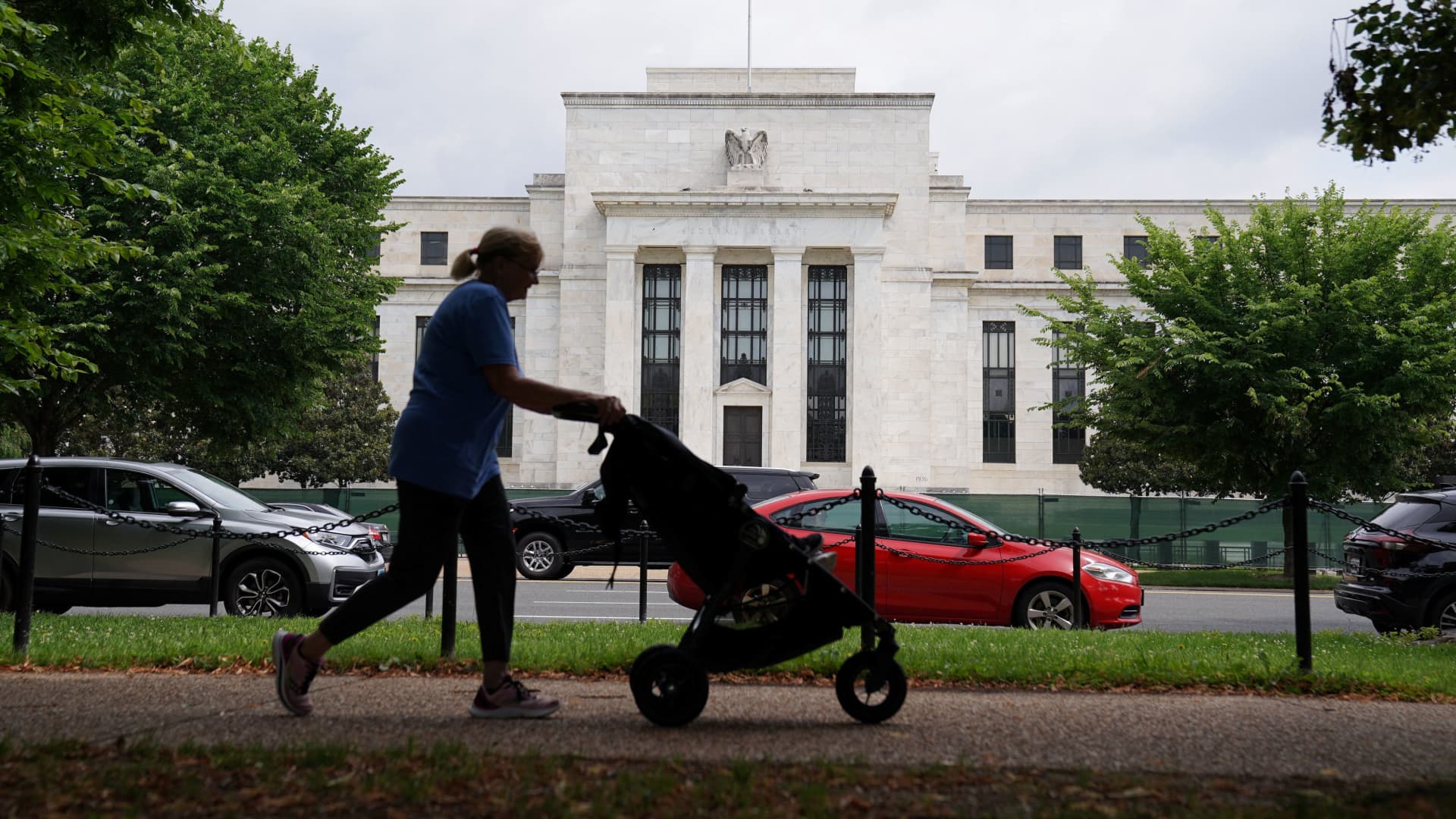The Federal Reserve left its target federal funds rate unchanged Wednesday, but did not signal an end to its aggressive rate hike campaign.
For households, that offers little relief from sky-high borrowing costs.
Altogether, Fed officials have raised rates 11 times in a year and a half, pushing the key interest rate to a target range of 5.25% to 5.5%, the highest level in more than 22 years.
“I’m worried for the consumer,” said Tomas Philipson, University of Chicago economist and a former chair of the White House Council of Economic Advisers. “People are hit on both fronts — lower real wages and higher rates.”
More from Personal Finance:
3 money moves millionaires are more likely to make
Money market funds vs high-yield savings accounts
Homeowners say 5% is the magic number to move
Since wage growth for many Americans hasn’t been able to keep pace with higher prices, those households are getting squeezed and are going into debt just when borrowing rates are spiking, Philipson said.
Real average hourly earnings fell 0.5% in August, while borrowers are paying more on credit cards, student loans and other types of debt.
“Borrowing is very expensive, period,” Philipson said.
What the federal funds rate means for you
The federal funds rate, which is set by the central bank, is the interest rate at which banks borrow and lend to one another overnight. Although that’s not the rate consumers pay, the Fed’s moves still affect the borrowing and savings rates they see every day.
Here’s a breakdown of how the central bank’s increases so far have affected consumers:
Credit cards
Since most credit cards have a variable rate, there’s a direct connection to the Fed’s benchmark. As the federal funds rate rose, the prime rate did as well, and credit card rates followed suit.
Credit card annual percentage rates are now more than 20%, on average — an all-time high. Further, with most people feeling strained by higher prices, more cardholders carry debt from month to month.
For those who carry a balance, there’s not much relief in sight, according to Matt Schulz, chief credit analyst at LendingTree.
“Even though the Fed chose not to raise rates in September, the truth is that no one should expect credit card interest rates to stop rising anytime soon,” he said.
In the meantime, knocking down that debt “should absolutely be the goal,” he said.
Home loans
Although 15-year and 30-year mortgage rates are fixed, and tied to Treasury yields and the economy, anyone shopping for a new home has lost considerable purchasing power, partly because of inflation and the Fed’s policy moves.
The average rates for a 30-year, fixed-rate mortgage “remain anchored north of 7%,” said Sam Khater, Freddie Mac’s chief economist.
“The reacceleration of inflation and strength in the economy is keeping mortgage rates elevated,” he said.
Other home loans are more closely tied to the Fed’s actions. Adjustable-rate mortgages and home equity lines of credit, or HELOCs, are pegged to the prime rate. Most ARMs adjust once a year after an initial fixed-rate period. But a HELOC rate adjusts right away. Already, the average rate for a HELOC is up to 9.12%, the highest in 22 years, according to Bankrate.
“That HELOC is no longer low-cost debt and it warrants a much higher focus on repayment than it has for a long time,” said Greg McBride, chief financial analyst at Bankrate.com.
Auto loans
Even though auto loans are fixed, payments are getting bigger because the price for all cars is rising along with the interest rates on new loans.
The average rate on a five-year new car loan is now 7.46%, the highest in 15 years, according to Bankrate.
Experts say consumers with higher credit scores may be able to secure better loan terms or shop around for better deals. Car buyers could save an average of $5,198 by choosing the offer with the lowest APR over the one with the highest, according to a recent report from LendingTree.
Student loans
Federal student loan rates are also fixed, so most borrowers aren’t immediately affected by the Fed’s moves. But undergraduate students who take out new direct federal student loans are now paying 5.50% — up from 4.99% in the 2022-23 academic year and 3.73% in 2021-22.
For those with existing debt, interest is now accruing again as of Sept. 1. In October, millions of borrowers will make their first student loan payment after a three-year pause.
Private student loans tend to have a variable rate tied to the Libor, prime or Treasury bill rates — and that means that those borrowers are already paying more in interest. How much more, however, varies with the benchmark.
Savings accounts
While the central bank has no direct influence on deposit rates, the yields tend to be correlated to changes in the target federal funds rate. The savings account rates at some of the largest retail banks, which were near rock bottom during most of the Covid pandemic, are currently up to 0.43%, on average, according to the Federal Deposit Insurance Corp.
Thanks, in part, to lower overhead expenses, top-yielding online savings account rates are now paying over 5%, according to Bankrate, which is the most savers have been able to earn in more than 15 years.
Because the top online savings accounts are currently beating inflation, “money in a savings account is no longer a drag on your portfolio,” McBride said. And yet, only 22% of savers are earning 3% or more on their accounts, according to another Bankrate report.
“Boosting emergency savings is rewarded with returns exceeding 5%, if you’re putting the money in the right place,” McBride said.
